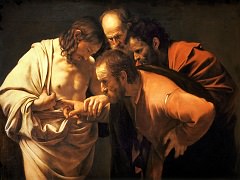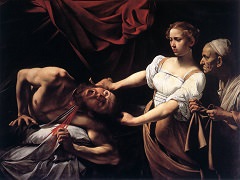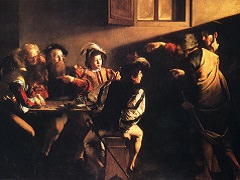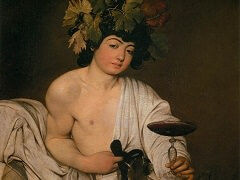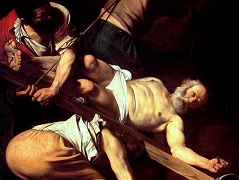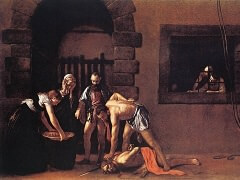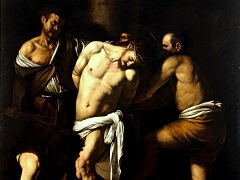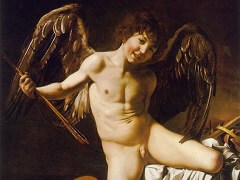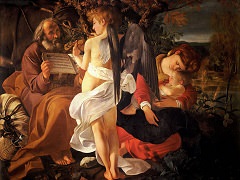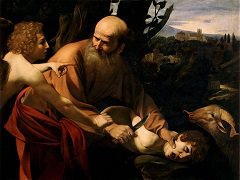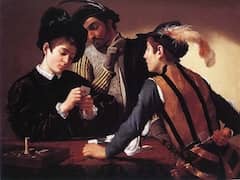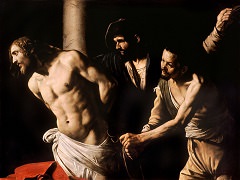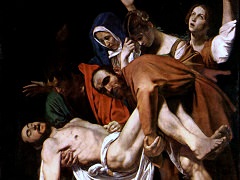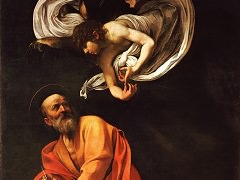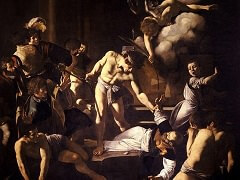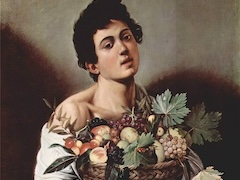Salome with the Head of John the Baptist, 1607 by Caravaggio
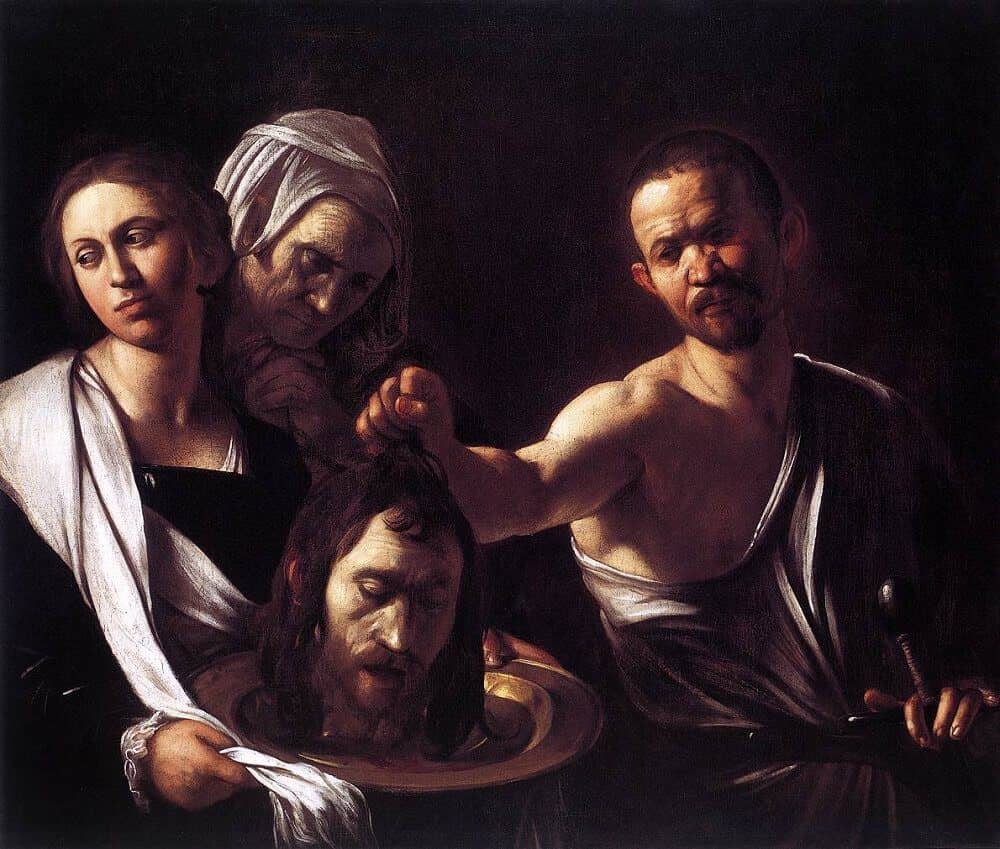
The Madrid Salome is quite possibly the picture which, according to Bellori, Caravaggio sent from Naples to Alof de Wignacourt in Malta in order to regain favour with the Grand Master after his flight from the island and subsequent expulsion from the Order. Yet it has been suggested that the work must have remained in Naples for several years, since certain pictures by Caracciolo - particularly his Salome in the Uffizi - seem indebted to it.
Caravaggio's Salome with the head of John the Baptist was, in fact, not listed in the inventory of the Escorial until 1686. Stylistically and emotionally close to the Sicilian paintings, it could well have been painted in Messina and then taken back to Naples, even if it was the work sent to Wignacourt. Indeed, there could have been little time in Naples itself to paint and dispatch the picture before Caravaggio was wounded in October 1609. The broad and confident handling of the drapery is reminiscent of a work such as the Messina Adoration, as is the melancholy and pensive mood. Caravaggio here returned to one of his favourite compositional formulae, an archway of figures, and used the monumental geometry to achieve an effect of deep meditation and tragic acceptance. The reactions of the figures are less dramatic, more restrained and classical, than those in the National Gallery version or in the Valletta Beheading of St. John the Baptist. Indeed, the classically posed executioner, who is reminiscent of figures by Annibale Carracci and who stares down at the serene, horizontally placed head of the Baptist, helps to transform the subject from a provocative spectacle into a profound meditation on death and human malevolence.

